Review and photos by Gerry Frechette
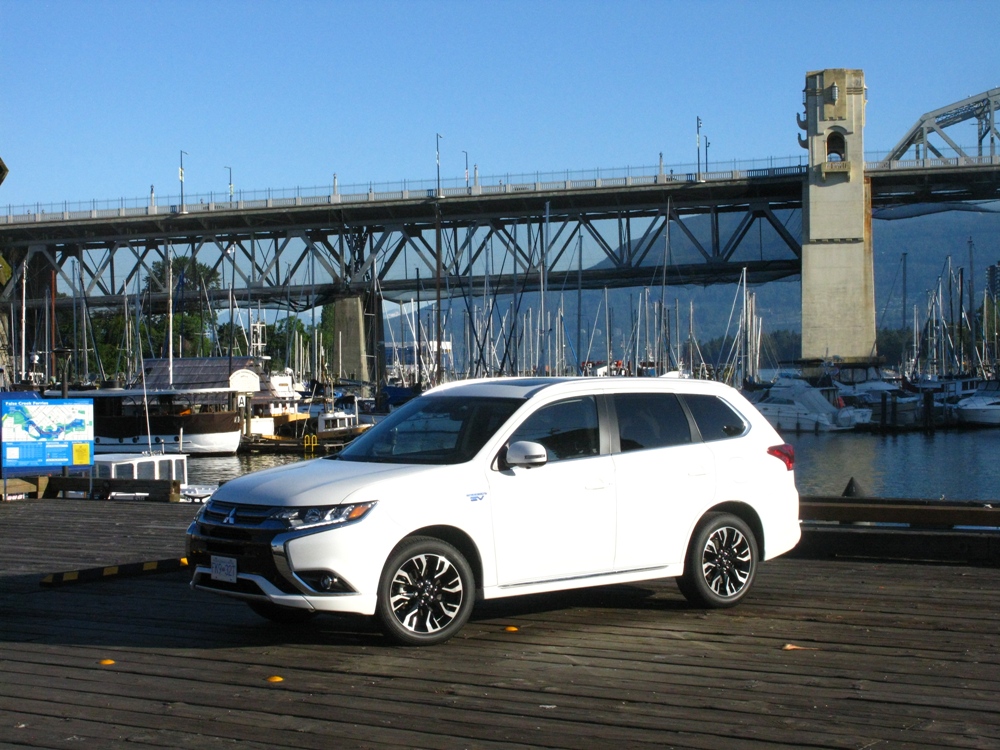
For many folks, Plug-In Hybrid Electric Vehicles make the most sense among the several options available that have some degree of electrification. They give you a useful range (typically a few dozen kilometres, but that range is rising) of all-electric operation, plus the insurance of a gasoline engine to eliminate the range anxiety of a pure electric vehicle.
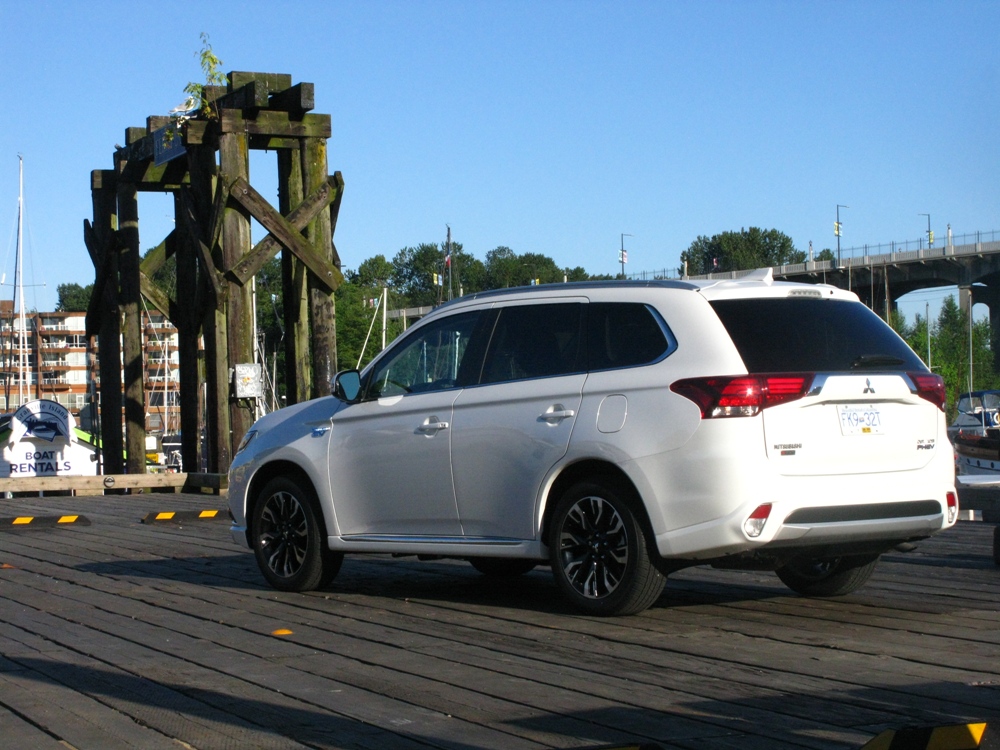
The thing is, most such vehicles have tended to be smaller sedans, which are the most thrifty already in gasoline-engine configuration. But bigger vehicles like SUVs that are more thirsty, and need the most help to get more economical, are beginning to get the PHEV treatment. The first from a mainstream brand, available for the last several years in overseas markets and finally on sale here this year, is the Mitsubishi Outlander PHEV.
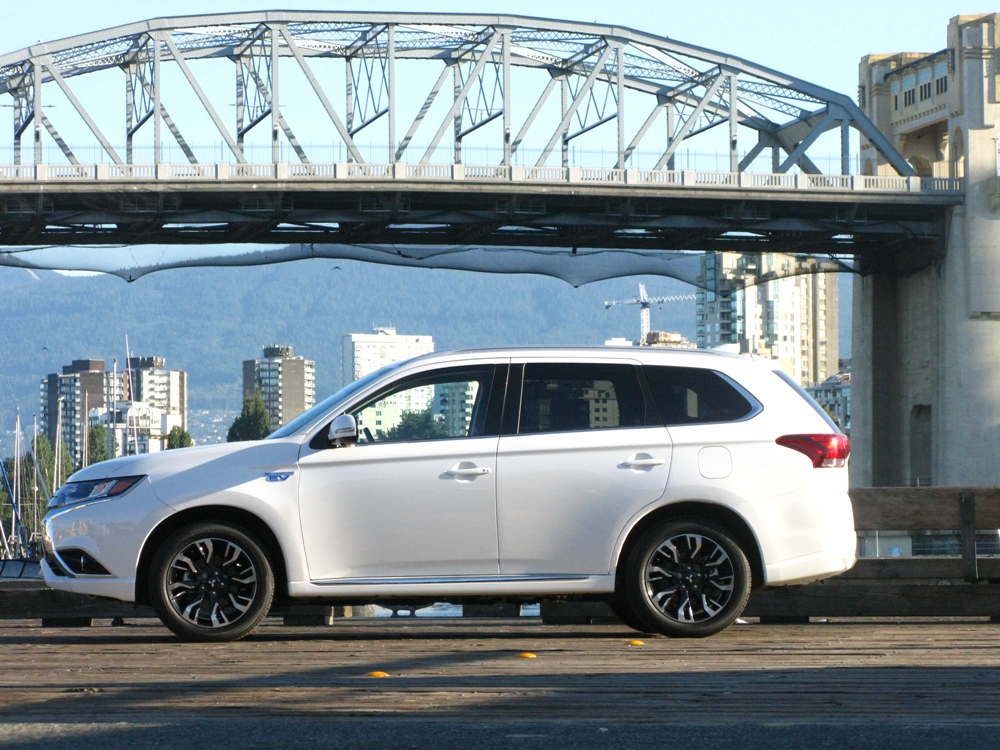
The level of EV technology in the Outlander is truly impressive, with several modes to choose from, either by the computer or by the driver. With a motor on each axle, plus the engine (2.0-litre four-cylinder) which acts more as a generator in most situations, the Outlander will operate in one of three drivetrain modes, depending on conditions.
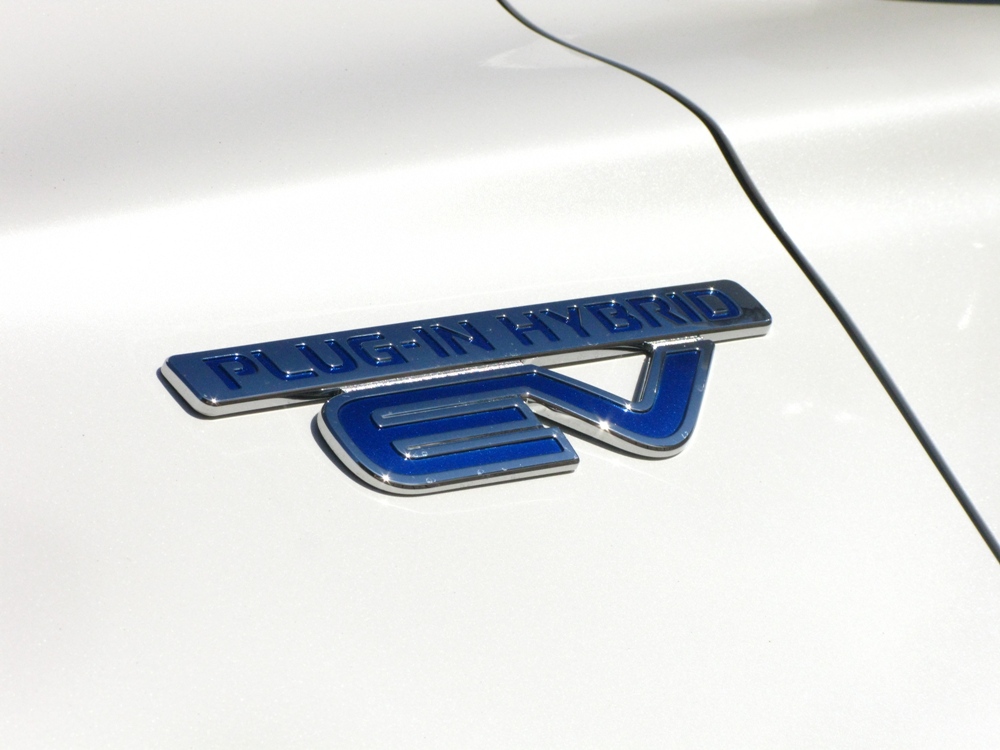
With a full battery charge, it’ll operate in EV Drive for about 38 km around town. This, of course, is the big selling point of any Plug-In vehicle, over a regular Hybrid. In Series Hybrid mode, when the batteries are depleted, the engine will operate, assisting the motors to power the vehicle, and at the same time, charging the batteries. And, in Parallel Hybrid mode, the primary power source is the engine, mostly at higher speeds on a highway where it is at its most efficient. The electric motors help the engine where possible, and the batteries get charged from the engine.
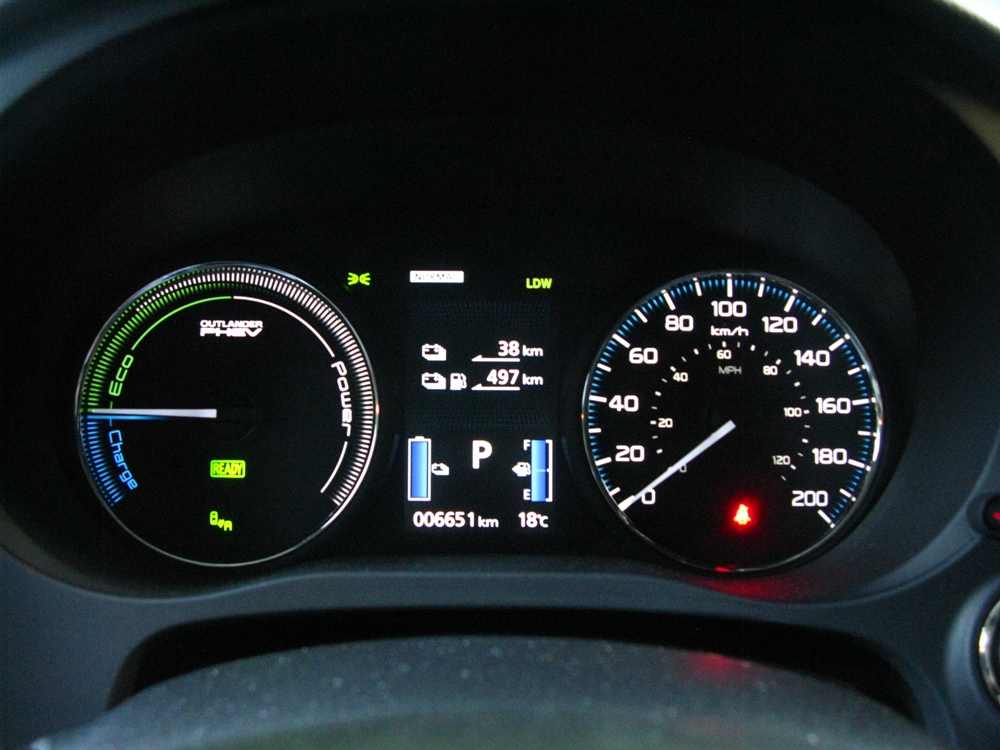
As if that level of system versatility isn’t enough, the driver can also choose from among three Drive Modes depending on the situation. Charge Mode has the engine simply charging the batteries on the go, a costly alternative to plugging in. Save Mode is to conserve the existing battery charge level by using the engine where it runs most efficiently (at steady speed on the highway), leaving the electricity to run the Outlander in that urban area you know you’ll be in, an hour from now. EV Priority Mode prioritizes 100-percent electric propulsion, which would seem to be the same as EV Drive described above, but with manual override. The main goal in all this is to maximize the use of the electric motors, and to keep the batteries as charged as possible.
The driver can also determine the level of regenerative braking, which sees throttle-off situations (coasting and braking) creating energy that is fed back into the batteries. There are six levels available, controlled by the paddles on the steering column, with the strongest level doing the job of the brakes in slowing the Outlander to a stop, in most situations. It’s an unusual feeling that has to be experienced to be understood, but all hybrids have it to some extent.
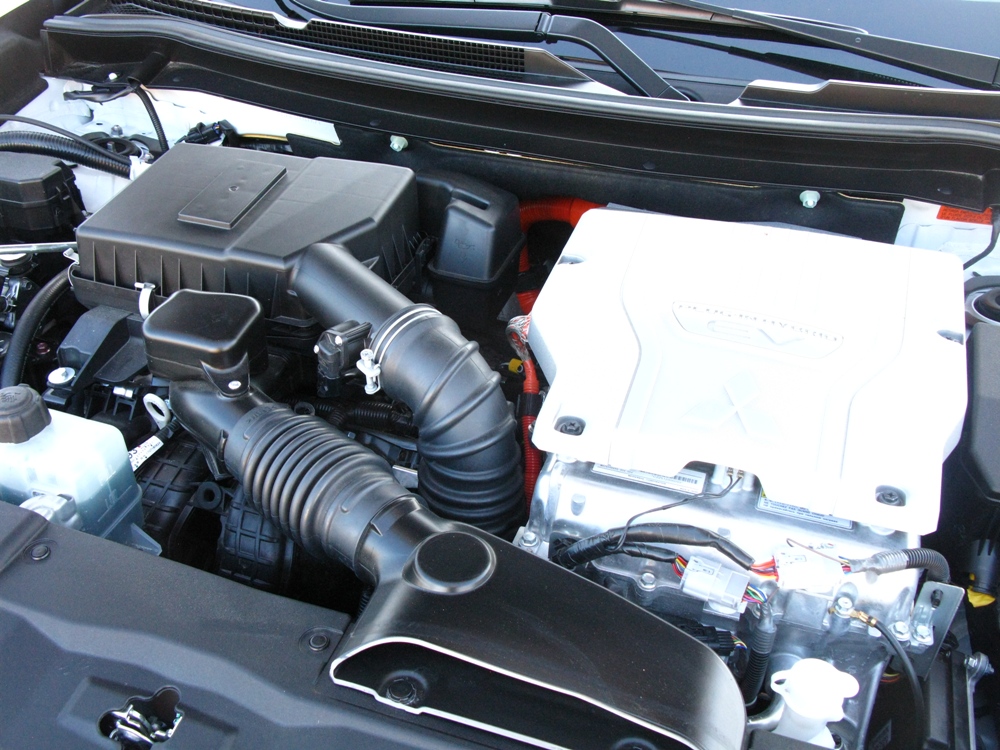
Mitsubishi claimed a couple of “firsts” in the SUV market, at the time of the Outlander PHEV’s introduction earlier this year. It’s the only SUV with fully-electric locked four-wheel drive capability, and the only SUV with DC Fast Charging capability, providing 80 percent charge in under 30 minutes. At 120V (regular AC outlet) the charge from empty takes from 8 to13 hours depending on amperage, while 240V yields full charge in less than 4 hours. Finally, there are two 120V AC power outlets located at the rear of the front centre console and in the cargo area. The outlets draw electricity directly from the drive battery and provide 1,500 watts of electric power, enough to power nearly any portable household appliance.
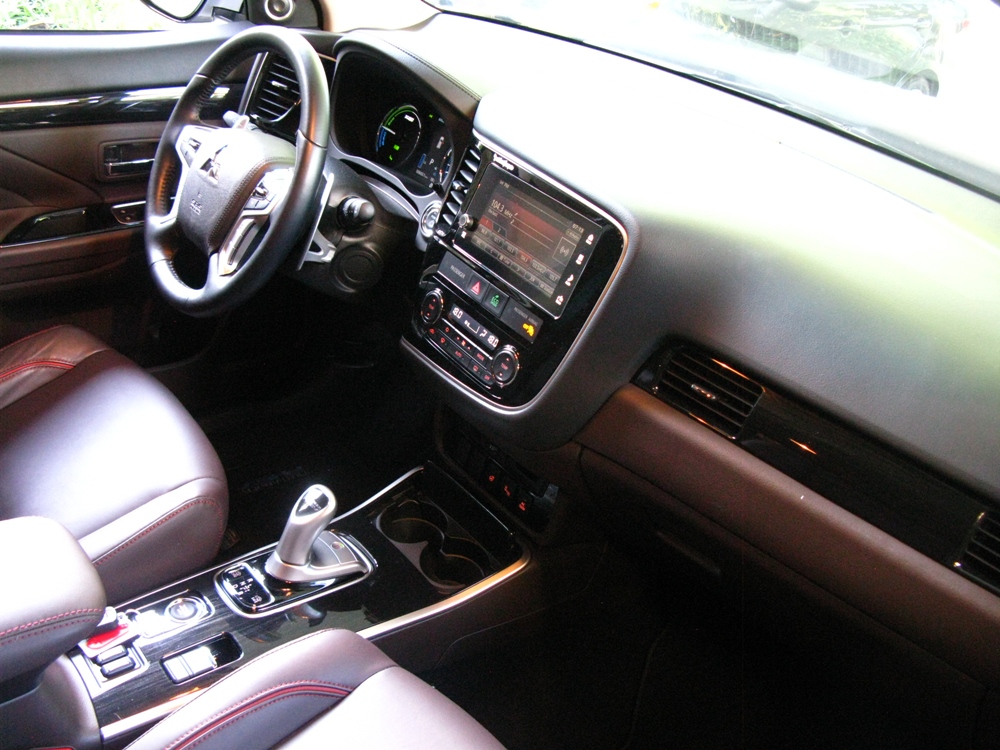
Phew! That is a lot of EV technology to describe, and it vaults the Outlander into the front rank of technologically advanced vehicles. But in the end, it has to make sense as a family vehicle, too, because most people buying SUVs still need all the attributes that such vehicles offer, no matter what moves it down the road.
The Outlander PHEV is offered in three models (SE, SE Touring, and GT) with the sort of escalation of standard features you’d expect, and that you can check online or at your local dealer. In the big picture – living with any of the versions day-to-day – the PHEV offers comfort and space for up to five people, as any chance of a third-row seat was negated by the motor under the rear floor. Said cargo floor seems to be slightly higher than a regular Outlander as a result, which will cut into ultimate capacity, but with the folding rear seats (which do not lie totally horizontal when down), there is quite adequate room for cargo.
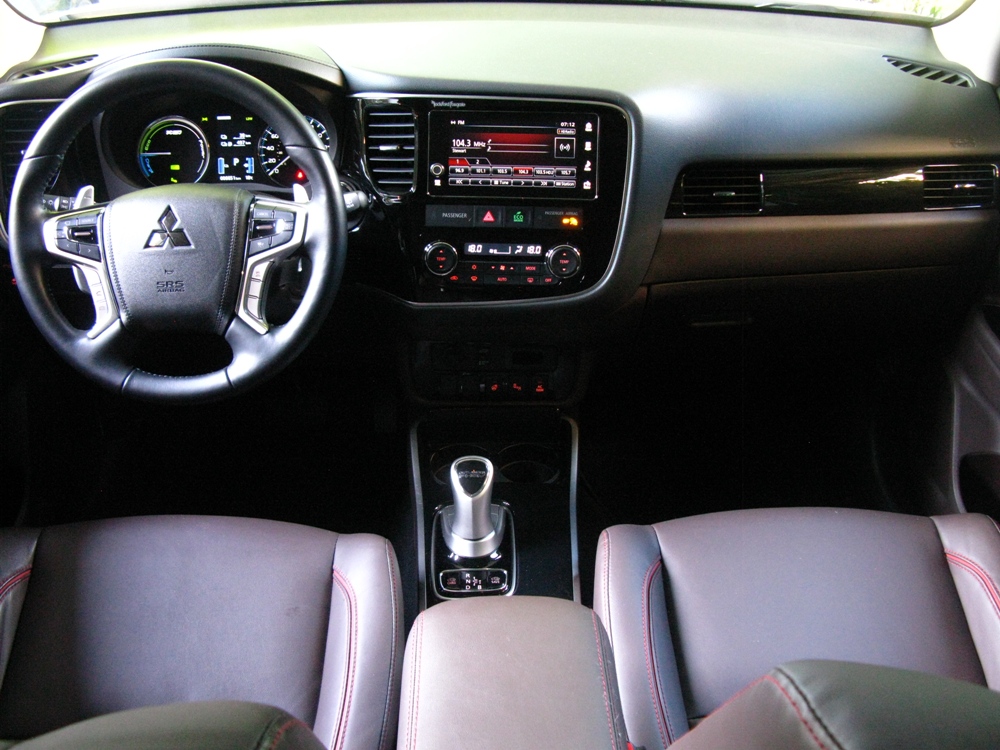
If you remember, we mentioned that the Outlander PHEV has been available overseas for several years – and therein lies the source of any sort of criticism. The Outlander is built on an older platform, and with all the weight of batteries and motors added to it, one might say that it is not quite the most dynamic SUV to drive. The ride quality is okay if a bit mushy, and the chassis is not as composed as we’ve come to expect in 2018, both in quick changes of direction, or under heavy braking. And certainly, the cabin is quiet, given the electric motors are silent. Most families without enthusiast drivers in them will consider it to be perfectly fine, and those who only get enthusiastic about technology and not using any fuel won’t care anyway.
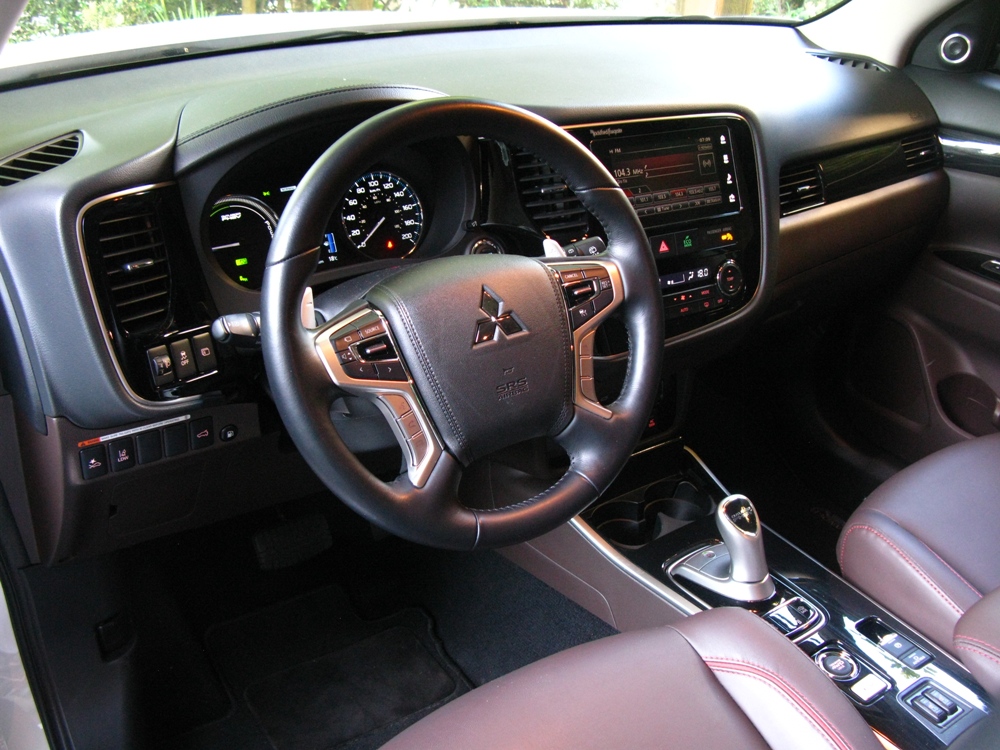
There is one other feature that Mitsubishi can claim market superiority in, and that is warranty. Like all other cars from this small Japanese manufacturer, the PHEV has a 10-year or 160,000 km powertrain warranty, plus the same coverage for the lithium-ion battery system.
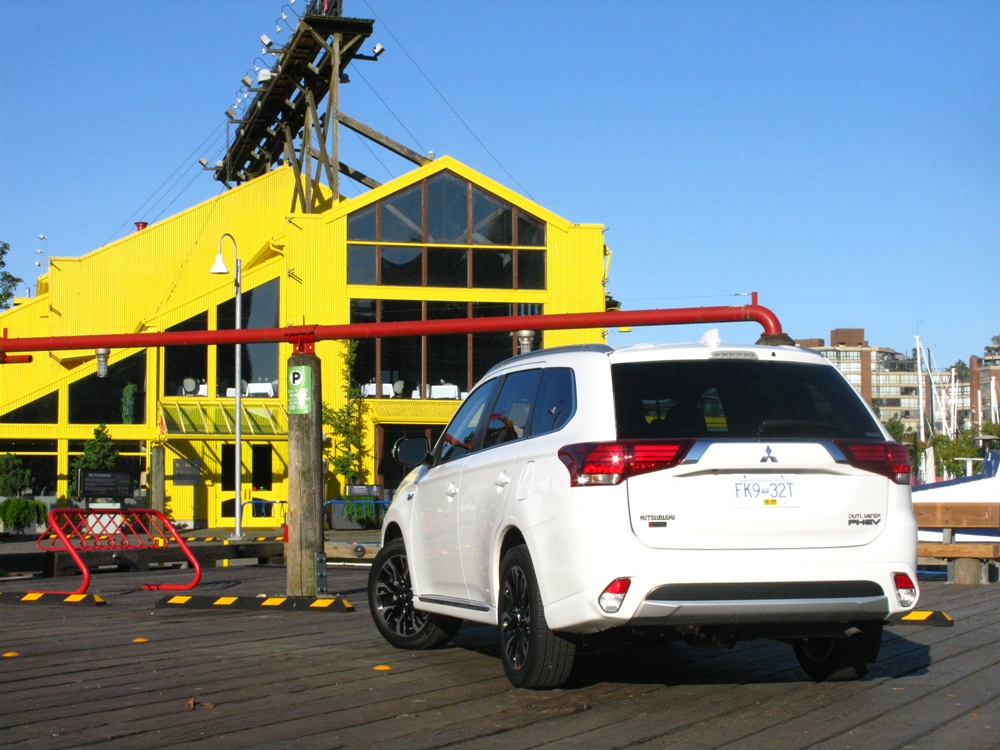
Mitsubishi is clearly on the right track with this PHEV system in the Outlander. With the most up-to-date EV technology available in an SUV, it is a great value, starting at $42,998, minus any government subsidies available.
SPECIFICATIONS:
- Base price (MSRP): $42,998
- Type: 4-door, 5-passenger midsize SUV
- Layout: Front engine / front & rear motors / AWD
- Engine: 2.0L DOHC, 16-valve I4
- Power: 117 hp @ 4,500 rpm
- Torque: 137 lb-ft @ 4,500 rpm
- Motors: 80 hp / 101 lb-ft (front), 80 hp / 144 lb-ft (rear)
- Transmission: Single-speed auto
- Weight: 1,895 kg
- Fuel Consumption (LE/100km, city/hwy): 3.0 / 3.4




